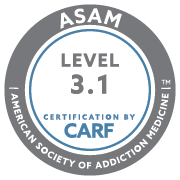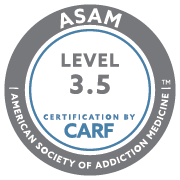School, friends, family, sports, work, technology, peer pressure, social media, intimate relationships—at any given moment, this is just a fraction of what young people may have on their minds. Add to that list factors like alcohol, marijuana, opioids, depression, and anxiety, and it’s clear that our nation’s youth are facing one of the most challenging periods of their lives. An estimated 345,000 adolescents aged 12 to 17 had a substance use disorder and a major depressive episode (MDE) in the past year. Additionally, in 2017, 13.3 percent of adolescents aged 12 to 17 (3.2 million adolescents) and 13.1 percent of young adults aged 18 to 25 (4.4 million) had a MDE during the past year.
At Rimrock, we provide comprehensive services to help young people and their families and friends that are dealing with mental and substance use disorders. Along with our inpatient and outpatient treatment services, one of the key ways Rimrock creates impactful change for these kids is through our School Based Programs.
In an effort to meet the growing mental health needs of students, Rimrock has partnered with School District 2 to develop the Integrated School Based Program, which provides a clinician who is dually credentialed within the school to be able to provide services for students who may be experiencing difficulties related to a mental health issues, substance use issues, or both. Some of the services they provide in the school include assessments (for both chemical dependency and mental health issues), referrals for appropriate services outside of school, individual counseling, group counseling, and early screening/intervention for students found to be utilizing mood altering chemicals. Clinicians are located at Senior, West, Skyview, and the Career Center.
The period from middle school to early adulthood means change, growth, and uncertainty. Vulnerable to outside influences, many young people start to experiment with dangerous substances like alcohol or begin misusing prescription drugs. Factors like schoolwork, peer pressure, and bullying can also cause stress and negative feelings in young people’s lives. This puts youth at risk for developing mental illness and substance use disorders, as demonstrated by the following statistics:
- In 2017, 5.1 million young adults aged 18 to 25 faced substance use disorder, with 2.4 million of these youth also experiencing mental health issues.
- In 2017, almost 1 in 5 students were bullied in school, and the proportion of students who consistently felt sad or hopeless increased from 29 percent in 2007 to 32 percent in 2017. (2018 Centers for Disease Control and Prevention (CDC) report)
- The number of U.S. high school students who reported being e-cigarette users increased 78 percent between 2017 and 2018, and numbers among middle school students rose 48 percent in the same time period. (CDC’s 2018 National Youth Tobacco Survey)
- America’s teens report a dramatic increase in their use of vaping devices in just a single year, with 37.3 percent of 12th graders reporting “any vaping” in the past 12 months, compared to just 27.8 percent in 2017. (National Institute on Drug Abuse’s (NIDA) 2018 Monitoring the Future Survey)
- 2.3 million adolescents aged 12 to 17 used alcohol for the first time in the past year.
Further, more than 85 percent of high school seniors say that it is easy or very easy to gain access to alcohol. (NIDA’s 2018 Monitoring the Future Survey)
- About 769,000 adolescents aged 12 to 17 and about 2.5 million young adults aged 18 to 25 misused opioids in the past year. The same report identifies this period of life as fraught with depression and that number of young people who take their lives continues to increase. (2017 National Survey on Drug Use and Health)
If you would like to receive more information about our adolescent services, please call 800-227-3953 or use our online form.
More information on the statistics cited in this post are available through the Substance Abuse and Mental Health Services Administration (SAMHSA) (https://www.samhsa.gov), the U.S. Department of Health and Human Services (HHS) (https://www.hhs.gov), and National Recovery Month (Recovery Month) (https://recoverymonth.gov).
You can also watch our MT Matters segment where our Director of Adolescent Services, Michelle Pinnow, discusses current trends in adolescent use, what parents should watch for if they suspect their child is using, how adolescent treatment differs from adult treatment, and more.





